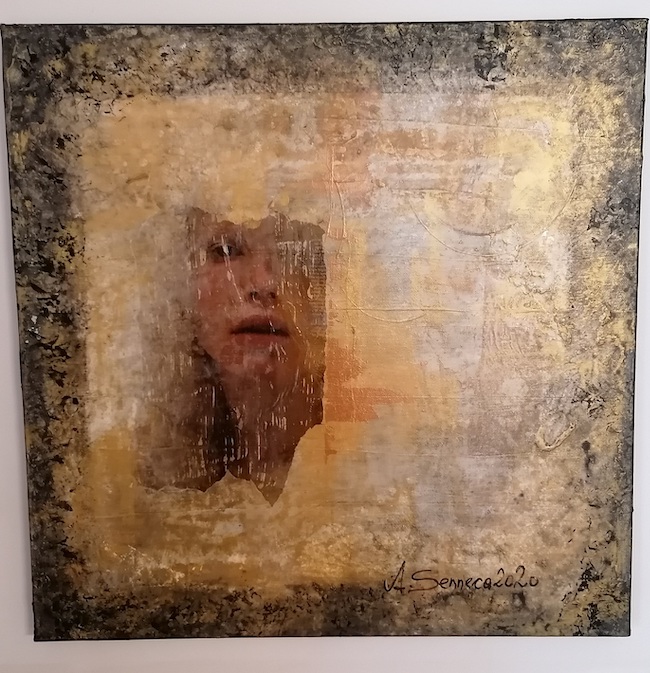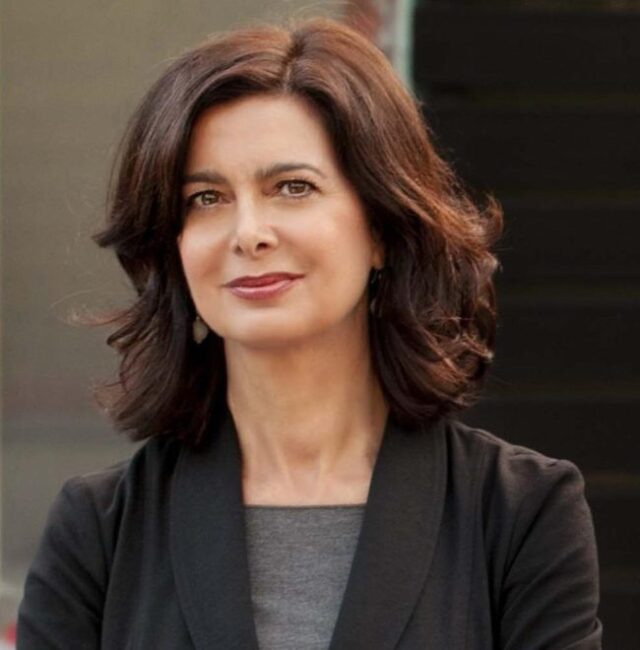La necessità di comunicare le emozioni che si muovono in maniera più o meno sottile all’interno del sentire dell’artista, si conformano alla modalità impulsiva o irruenta oppure meditativa che contraddistingue la naturale inclinazione di ciascun esecutore delle opere; la difformità del linguaggio comunicativo rappresenta il fascino e l’individualità del sentiero creativo dei rappresentanti contemporanei del mondo dell’arte. L’artista di cui vi parlerò oggi accorda lo stile espressivo alla sua innata necessità di armonia, sia delle forme che dei colori, infondendo nell’osservatore la sensazione di trovarsi davanti a un mondo interiore intenso eppure morbidamente sereno ed equilibrato.
L’Espressionismo Astratto è stato uno dei movimenti del Novecento che ha lasciato una profonda traccia nella storia dell’arte sia per il suo aver voluto riaffermare e porre l’accento sull’importanza dell’imprimere le emozioni sulla tela, tema inizialmente teorizzato da uno dei fondatori dell’Astrattismo, Vassily Kandinsky ma poi subito dopo osteggiato dagli altri movimenti coevi che intendevano sottolineare ed enfatizzare la supremazia dell’atto plastico puro a se stesso e completamente depurato da qualsiasi sensazione soggettiva, sia per l’aver compreso quanto la tendenza personale, la necessità di esprimersi secondo le proprie caratteristiche creative, fossero essenziali proprio per lasciare agli artisti aderenti la libertà di lasciar fluire le emozioni senza dover rispettare o adeguarsi ad alcuno schema predefinito. La corrente artistica teorizzata e fondata da Jackson Pollock incontrò inizialmente l’opposizione da parte degli ambienti artistici statunitensi – indimenticabile fu la loro indignazione quando si videro esclusi dalla grande mostra sull’arte contemporanea dell’epoca organizzata dal Metropolitan Museum of Art di New York poiché la loro modalità espressiva non era considerata all’altezza di essere denominata arte -, poi però il linguaggio spontaneo e fortemente emozionale degli aderenti al gruppo non poté fare a meno di conquistare estimatori e addetti ai lavori che ne decretarono il successo. Le atmosfere suggestive e silenziose di Mark Rothko dialogavano con l’irruenza gestuale dell’Action Painting di Jackson Pollock, i lampi di colori primari di Clyfford Still si affiancavano ai reticolati grafici e alle linee irregolari di Bradley Walker Tomlin, fino a giungere ai monocromi misteriosi e mistici di Barnett Newman. Il movimento dell’Espressionismo Astratto non si limitò però a lasciare la propria impronta nella storia dell’arte del Ventesimo secolo bensì diede inizio a un percorso espressivo in cui l’importanza delle sensazioni e dell’emozionalità del singolo non potevano prescindere dall’opera d’arte e dall’individuale linguaggio pittorico e artistico dell’esecutore dell’opera; nella contemporaneità uno degli artisti che maggiormente hanno raccolto e sposato in pieno l’intensità comunicativa del movimento figlio dell’intuizione di Pollock è Gerard Richter, le cui tele piene di colore, prima stratificato e poi graffiato, conquistano proprio per la loro capacità di mettere l’osservatore faccia a faccia con il senso di indefinitezza che spesso tenta di ignorare pur essendone pienamente consapevole. L’artista austriaca Anneliese Senneca fa sue tutte le principali tematiche dell’Espressionismo Astratto, dalla libertà espressiva alla necessità di comunicare le proprie emozioni, dall’utilizzo completamente personale del colore all’atmosfera che dalle sue opere fuoriesce, assecondandole però al suo sentire soffice, morbido, a un approccio aperto ed empatico alle cose osservate, approccio in virtù del quale la sua comunicatività diviene coinvolgente per quel suo essere rasserenante.
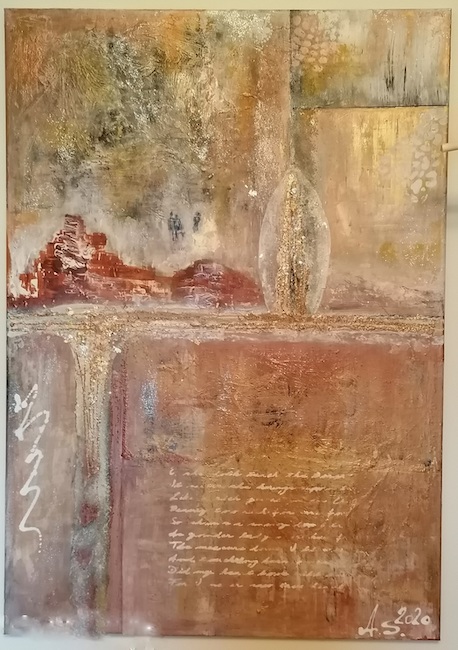
L’osservatore si sente trasportato in un mondo calmo, costituito da colori tenui anche quando le emozioni narrate sono intense e forti nell’animo dell’artista che ama immortalare frangenti della natura, quegli episodi quotidiani, quei luoghi osservati o ricordati distrattamente che vengono fissati sulla tela in virtù della capacità espressiva della Senneca.
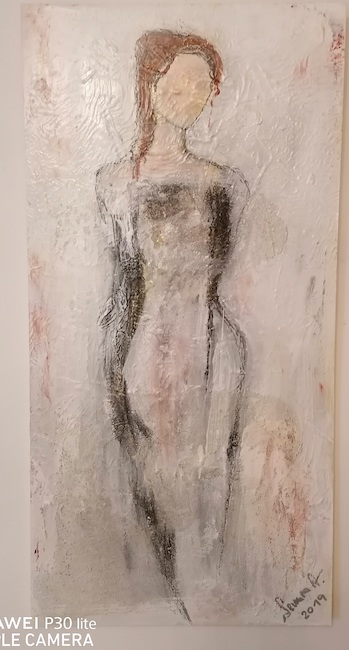
Non è necessario gridare forte per far fuoriuscire le profondità del sentire, sembra dire l’artista, tutto ciò che è necessario è riuscire a connettersi con l’interiorità e lasciarsi andare a quanto le sensazioni tracciano; sebbene il suo stile sia fortemente emozionale e legato a frammenti di impressioni ricevute quando si trovava di fronte agli scorci e alle esperienze vissute, Anneliese Senneca ha sempre ben chiaro in mente ciò che vuole rappresentare ogni qualvolta si siede davanti alla tela.
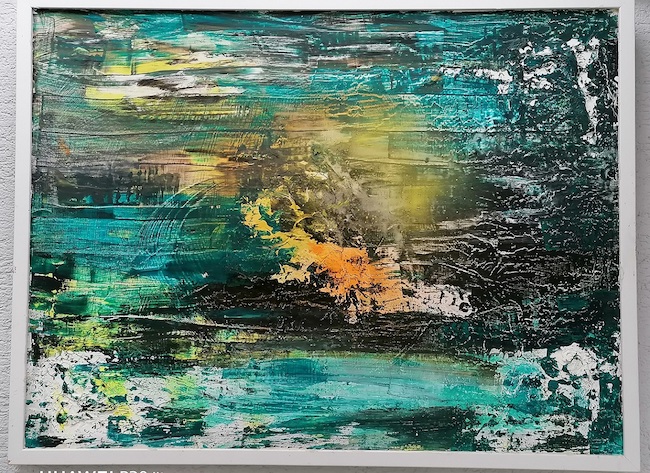
Dentro quel progetto iniziale lascia fluire e libera quanto la sua interiorità necessita di raccontare, o per meglio dire di esprimere in maniera immediata all’osservatore, senza alcun filtro o legame con l’immagine reale, quella che distaccherebbe dal contatto con il sentire più profondo.
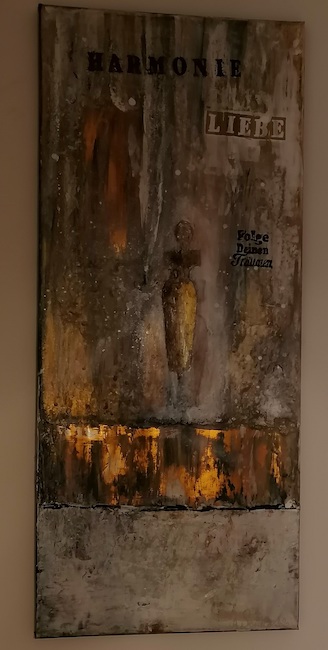
Nell’opera Feuer der Liebe (Fuoco d’amore) l’artista esprime un sentimento forte e incisivo, così tanto da non riuscire a rappresentarlo con i colori esplosivi che abitualmente si legano alla più forte tra le emozioni umane, bensì raffigurandone le basi solide e radicate su cui è essenziale che si costruisca e cresca, incidendo su quel bruciare sottostante le parole chiave che dovrebbero essere la guida e il fine di ciascun individuo.
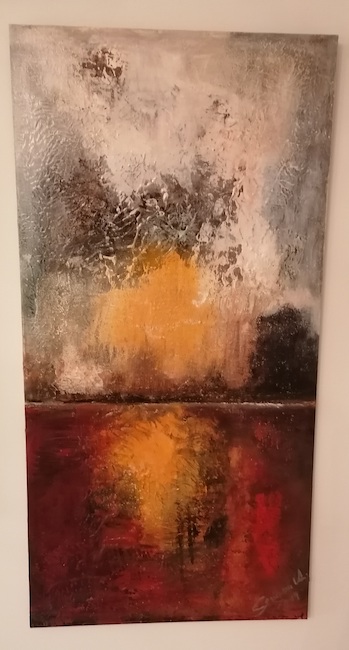
In Sonnenuntergang (Tramonto), malgrado la mancanza di figurazione, lo sguardo non può fare a meno di essere conquistato dall’arancio del sole che si disperde, o forse si specchia, tra cielo e terra, quel suo riuscire a illuminare di positività la fine del giorno nella certezza che l’indomani vi sarà un nuovo inizio; la sensazione percepita è rassicurante, romantica, affascinante per il senso di calore che le tonalità scelte da Anneliese Senneca riescono a diffondere, facendo così vibrare le corde intime di chi si trova davanti all’opera.

Quando affronta il tema della natura l’artista svela tutta l’ammirazione e il trasporto con cui si pone di fronte ai piccoli e grandi eventi quotidiani, ai percorsi che normalmente compie mai trascurando di fermarsi a guardare il complesso di ciò che è davanti ai suoi occhi per poi, una volta che rivive quegli istanti, raffigurarne e narrarne i particolari, i dettagli che inizialmente sembravano esserle sfuggiti; in Meerstiefe (Profondità del mare) affronta il paesaggio in un modo singolare, come se lo stesse esaminando in sezione, come se il suo desiderio di esplorare ciò che è sottostante fosse un cammino ammaliante e irresistibile tanto quanto quello di comunicare la sua sensazione al fruitore.
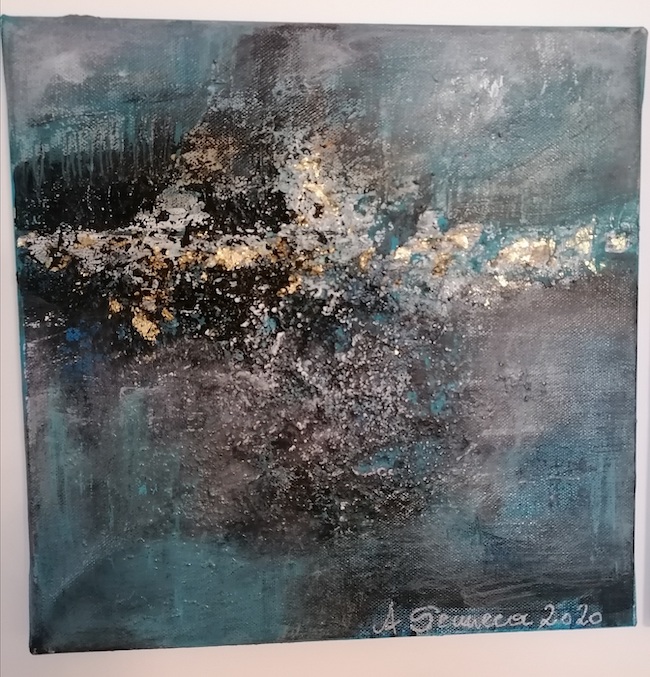
Vi è sempre morbidezza carezzevole nelle tele di Anneliese Senneca che trasforma così l’Espressionismo Astratto in un mondo sognante fatto di apertura e di ascolto, di interpretazione sempre positiva degli accadimenti dell’esistenza, di quel saper guardare anche nel buio della notte, come nella tela Nachthimmel (Cielo notturno), scorgendo la luminosità delle stelle, un evento quotidiano di cui si può scegliere di cercare il chiarore piuttosto che fermarsi alle sue ombre; l’esplosione centrale dell’opera enfatizza questo concetto proprio in virtù della sofficità con cui l’artista stende il colore, quel saper mescolare le tonalità per far emergere i lucenti bianchi a discapito di un nero che, a saper guardare bene, non è mai così scuro come sembra. È un’allegoria della vita quest’opera, la consapevolezza che sia possibile scegliere se avere un atteggiamento positivo e vivere ciascuna esperienza come parte di un percorso evolutivo, oppure optare per un approccio più cupo e negativo e interpretare ogni evento come qualcosa di negativo che sarebbe stato meglio non accadesse; l’artista suggerisce all’osservatore che il modo migliore di attraversare l’esistenza è il primo, quello aperto, sorridente, divertito e solare. Anneliese Senneca si è sempre sentita attratta dalla pittura ma ha cominciato a esercitarla con passione e continuità dopo aver smesso di lavorare, esponendo in diverse mostre collettive nella sua nazione.
ANNELIESE SENNECA
Email: senann258@gmail.com
Facebook: https://www.facebook.com/anse.anse.3386585
Instagram: https://www.instagram.com/annelieselangreiter/
The soft, harmonious tones of expression in the artworks of Anneliese Senneca
The need to communicate the emotions that move in a more or less subtle way within the artist’s feeling, conform to the impulsive or impetuous or meditative mode that distinguishes the natural inclination of each performer of the artworks; the dissimilarity of the communicative language represents the charm and individuality of the creative path of contemporary representatives of the world of art. The artist I am going to talk about today tunes his expressive style to his innate need for harmony of both form and colour, giving the viewer the feeling of being in front of an intense yet softly serene and balanced inner world.
Abstract Expressionism was one of the movements of the 20th century that left a profound mark on the history of art, both for its desire to reaffirm and emphasise the importance of imprinting emotions on canvas, a theme initially theorised by one of the founders of Abstractionism, Vassily Kandinsky, but then immediately opposed by other contemporary movements that wanted to underline and emphasise the supremacy of the plastic act pure in itself and completely purified of any subjective sensation, and for having understood how personal tendency, the need to express oneself according to one’s own creative characteristics, were essential precisely in order to give artists the freedom to let their emotions flow without having to respect or adapt to any predefined scheme. The artistic movement theorised and founded by Jackson Pollock initially met with opposition from American artistic circles – their indignation when they were excluded from the great exhibition of contemporary art of the time organised by the Metropolitan Museum of Art in New York, because their mode of expression was not considered worthy of being called art, was unforgettable – but then the spontaneous and highly emotional language of the group’s members could not help but win over admirers and experts who decreed its success.
Mark Rothko’s evocative and silent atmospheres dialogued with the gestural impetuosity of Jackson Pollock’s Action Painting, Clyfford Still’s flashes of primary colours flanked Bradley Walker Tomlin’s graphic grids and irregular lines, and finally Barnett Newman’s mysterious and mystical monochromes. The Abstract Expressionist movement, however, did not merely leave its mark on the history of 20th century art, but also initiated an expressive path in which the importance of the individual’s feelings and emotions could not be separated from the artwork and the individual pictorial and artistic language of the work’s creator; in contemporary art, one of the artists who has most fully embraced the communicative intensity of the movement born of Pollock’s intuition is Gerard Richter, whose canvases full of colour, first layered and then scratched, are captivating precisely because of their ability to bring the observer face to face with the sense of indefiniteness that he often tries to ignore despite being fully aware of it. The Austrian artist Anneliese Senneca embraces all the main themes of Abstract Expressionism, from the freedom of expression to the need to communicate her emotions, from her completely personal use of colour to the atmosphere that emerges from her artworks, but she does so in accordance with her soft, supple feeling, her open and empathetic approach to the things observed, an approach by virtue of which her communicativeness becomes captivating thanks to his being soothing. The observer feels transported into a serene world, made up of soft colours even when the emotions narrated are intense and strong in the soul of the artist, who loves to immortalise moments of nature, those daily episodes, those places observed or remembered distractedly that are fixed on the canvas by virtue of Senneca’s expressive capacity. It is not necessary to shout loudly to bring out the depths of feeling, the artist seems to say, all that is necessary is to be able to connect with the inner self and let oneself go to what the sensations trace; although her style is strongly emotional and linked to fragments of impressions received when she was faced with the views and experiences she has lived, Anneliese Senneca always has a clear idea in her mind of what she wants to represent every time she sits down in front of the canvas.
Within that initial project she lets flow and free what her inner self needs to tell, or rather to express in an immediate way to the observer, without any filter or link with the real image, the one that would detach from the contact with the deepest feeling. In Feuer der Liebe (Fire of Love) the artist expresses a strong and incisive feeling, so much so that she is unable to represent it with the explosive colours usually associated with the strongest of human emotions, but rather by depicting the solid, deep-rooted foundations on which it is essential to build and grow, engraving on that underlying burning the key words that should be the guide and goal of each individual. In Sonnenuntergang (Sunset), despite the lack of figuration, the eye cannot help but be captivated by the orange of the sun that disperses, or perhaps is mirrored, between sky and earth, its success in illuminating with positivity the end of the day in the certainty that the next day there will be a new beginning; the sensation perceived is reassuring, romantic, fascinating because of the sense of warmth that the tones chosen by Anneliese Senneca manage to diffuse, making the intimate chords of those who find themselves in front of the artwork vibrate.
When she tackles the theme of nature, the artist reveals all the admiration and transport with which she confronts small and large everyday events, the paths she normally takes, never neglecting to stop and look at the whole of what is before her eyes and then, once she relives those moments, to depict and narrate the details that initially seemed to have escaped her; in Meerstiefe (Depths of the Sea) she approaches the landscape in a singular way, as if she were examining it in sections, as if her desire to explore what lies beneath was as bewitching and irresistible a path as that of communicating her sensation to the viewer. There is always a caressing softness in the canvases of Anneliese Senneca, who thus transforms Abstract Expressionism into a dreamy world made up of openness and listening, of an always positive interpretation of the events of existence, of knowing how to look even in the darkness of the night, as in the canvas Nachthimmel (Night Sky), glimpsing the brightness of the stars, an everyday event of which one can choose to seek the light rather than stop at its shadows; the central explosion of the painting emphasises this concept precisely because of the softness with which the artist spreads the colour, her ability to mix the shades to bring out the bright whites at the expense of a black that, if you look closely, is never as dark as it seems. This artwork is an allegory of life, an awareness that it is possible to choose whether to have a positive attitude and live each experience as part of an evolutionary path, or to opt for a more sombre and negative approach and interpret each event as something negative that would have been better not to happen; the artist suggests to the observer that the best way to go through existence is the first, the open, smiling, amused and sunny way. Anneliese Senneca has always felt attracted to painting, but began to practice it with passion and continuity after she stopped working, exhibiting in several group exhibitions in her country.


